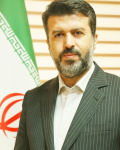| Authors | Hamed Najafi-Ashtiani, Fengjuan Jing, Dougal G. McCulloch, Behnam Akhavan |
|---|---|
| Journal | Solar Energy Materials and Solar Cells |
| IF | 6.984 |
| Paper Type | Full Paper |
| Published At | 2021 |
| Journal Grade | ISI |
| Journal Type | Typographic |
| Journal Country | Netherlands |
Abstract
Nanocomposites of dielectric/metal/dielectric (DMD) materials that are both optically transparent and
electrically conductive are of great interest for an array of modern optoelectronic applications,
including electrochromic and energy storage devices. Here we report for the first time the creation of
ITO-free DMD nanocomposite structures that are composed of only three layers: (Ag-doped
WO3)/(Ag)/(WO3). We employed high power impulse magnetron sputtering (HiPIMS) as a new
technology to deposit the internal WO3 layer and external Ag/WO3 nanocomposite. High rates of silver
ionization in the HiPIMS process and energetic arrival of silver ions on the negatively biased DMD
structure enabled their penetration into the external tungsten oxide layer, forming a nanocomposite
structure in a single-step process. We provided evidence that this unique structure pushes the
performance of transparent-conductive DMD materials beyond their intrinsic limits. To optimize the
surface plasmon resonance effect and thus the electrochromic performance of the structures, we
changed the size of silver nanoclusters through vacuum post-annealing in the same sputtering chamber
at varied temperatures. The optimized Ag-WO3/Ag/WO3 structure was transparent (average
transmittance = 75.89 ± 0.05% in the wavelength range of 300 to 700 nm) and conductive (sheet
resistance = 23.6 ± 0.8 Ω/□). Moreover, it showed favorable electrochromic characteristics with high
coloration efficiency (32.1 cm2 C-1), fast switching speed, and excellent long-term stability for at least
2000 cycles. The mechanisms of improvement in the electrochromic performance of such bifunctional
structures underpinned by surface plasmon resonance, as modulated by the size and average distance
of silver nanoclusters, are elucidated. The versatile new approach using HiPIMS for the fabrication of
transparent-conductive nanocomposite coatings on ITO-free substrates holds great potential to
manufacture next-generation optoelectronic materials such as electrochromic devices.
